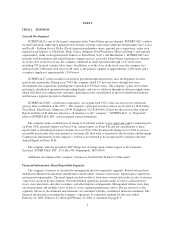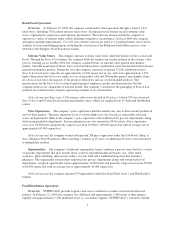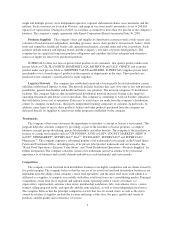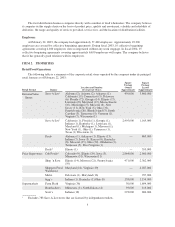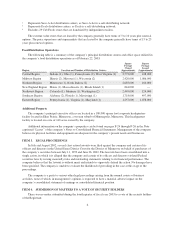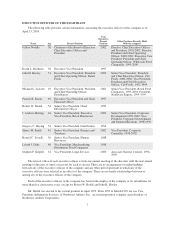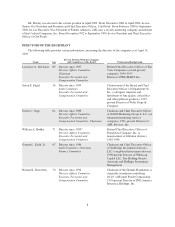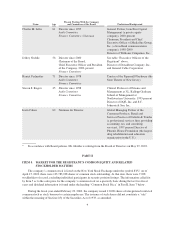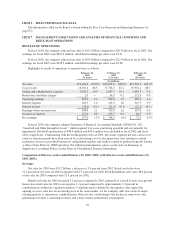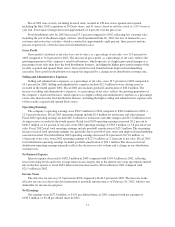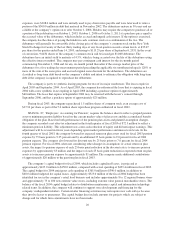Albertsons 2003 Annual Report Download - page 12
Download and view the complete annual report
Please find page 12 of the 2003 Albertsons annual report below. You can navigate through the pages in the report by either clicking on the pages listed below, or by using the keyword search tool below to find specific information within the annual report.Weighted average diluted shares increased to 134.9 million in 2003 compared with 2002 weighted average
diluted shares of 134.0 million, reflecting the net impact of stock option activity and shares repurchased under
the treasury stock program.
Comparison of fifty-two weeks ended February 23, 2002 (2002) with fifty-two weeks ended February 24,
2001 (2001):
Net Sales
Net sales for 2002 were $20.3 billion, a decrease of 9.9 percent from 2001. Retail food sales were
47.1 percent of net sales for 2002 compared with 41.5 percent for 2001. Food distribution sales were 52.9 percent
of net sales for 2002 compared with 58.5 percent for 2001.
Retail food sales for 2002 increased 2.1 percent compared to 2001, primarily as a result of new store growth.
Same-store sales for 2002 were positive 0.2 percent reflecting the soft economy, competitor activities and
cannibalization in certain markets. Cannibalization is defined as the negative sales impact the opening of a new
store has on an existing store in the same market. As the company adds new stores to major existing markets, it
experiences cannibalization.
Fiscal 2002 store activity, including licensed units, resulted in 115 new stores opened and 49 stores closed
or sold for a total of 1,260 stores at year end. Total square footage increased approximately 6.7 percent over the
prior year.
Food distribution sales for 2002 decreased 18.4 percent compared to 2001, reflecting lost customer sales,
including the exit of the Kmart supply contract, which terminated June 30, 2001. The exit of the Kmart supply
contract accounted for approximately 68 percent of the decrease and restructure activities accounted for
approximately 13 percent of the decrease.
Gross Profit
Gross profit (calculated as net sales less cost of sales), as a percentage of net sales, was 12.8 percent for
2002 compared to 11.3 percent for 2001. The increase in gross profit, as a percentage of net sales, was primarily
due to the growing proportion of the company’s retail food business, which operates at a higher gross profit
margin as a percentage of net sales than does the food distribution business and improved merchandising
execution in retail. In 2001, gross profit includes $17.1 million in cost of sales for inventory markdowns related
to restructure activities.
Selling and Administrative Expenses
Selling and administrative expenses, as a percentage of net sales, were 10.1 percent for 2002 compared to
9.1 percent for 2001. Selling and administrative expenses include $12.5 million in store closing reserves recorded
in the fourth quarter 2002 and $51.7 million primarily for store closing reserves and provisions for certain
uncollectible receivables recorded in 2001. The company acquired Richfood Holdings, Inc. (Richfood) in fiscal
2000. During fiscal 2001, the financial condition of two of Richfood’s larger customers deteriorated and exposed
the company to increased potential for loss. Therefore, the company established additional provisions for losses
on receivables as the deterioration occurred.
The increase in selling and administrative expenses, as a percentage of net sales, is primarily due to the
growing proportion of the company’s retail food business, which operates at a higher selling and administrative
expense as a percentage of net sales than does the food distribution business and increases in closed property
reserves substantially offset by gains on sales of disposed properties.
12


